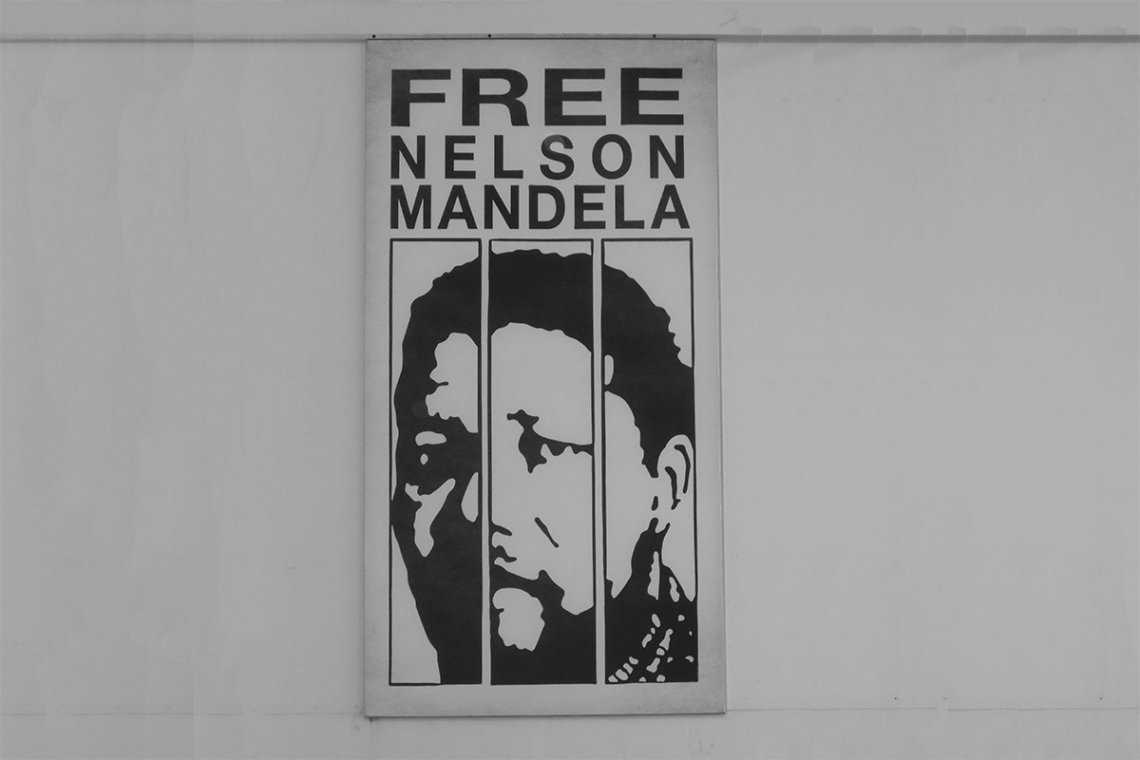
DRAMA IN ROBBEN ISLAND
The feelings and the thoughts I had on Robben island are still roaming in my mind. For me, the most confusing question is why? Why would any human abuse another human, just because he has a different color, language or religion? Is that reason enough? and now after many years, does it worth all that hate and anger to prove the superiority of one color, language or religion? I can see many other questions in each corner of Robben island. I will try to find answers for all that questions. Hope I can !!
Robben island is a small island to the north-west of Cape Town, South Africa. For many centuries it was a prison and isolation for influencing politicians, leaders and activists. Nobel Laureate and former President of South Africa Nelson Mandela was imprisoned in the maximum security prison of Robben island for 18 of the 27 years he served behind bars before the fall of the apartheid regime. It is remarkable to mention that, to date 3 former inmates of Robben Island have gone on to become President of South Africa: Nelson Mandela, Kgalema Motlanthe and Jacob Zuma.
Anatomy of Robben island
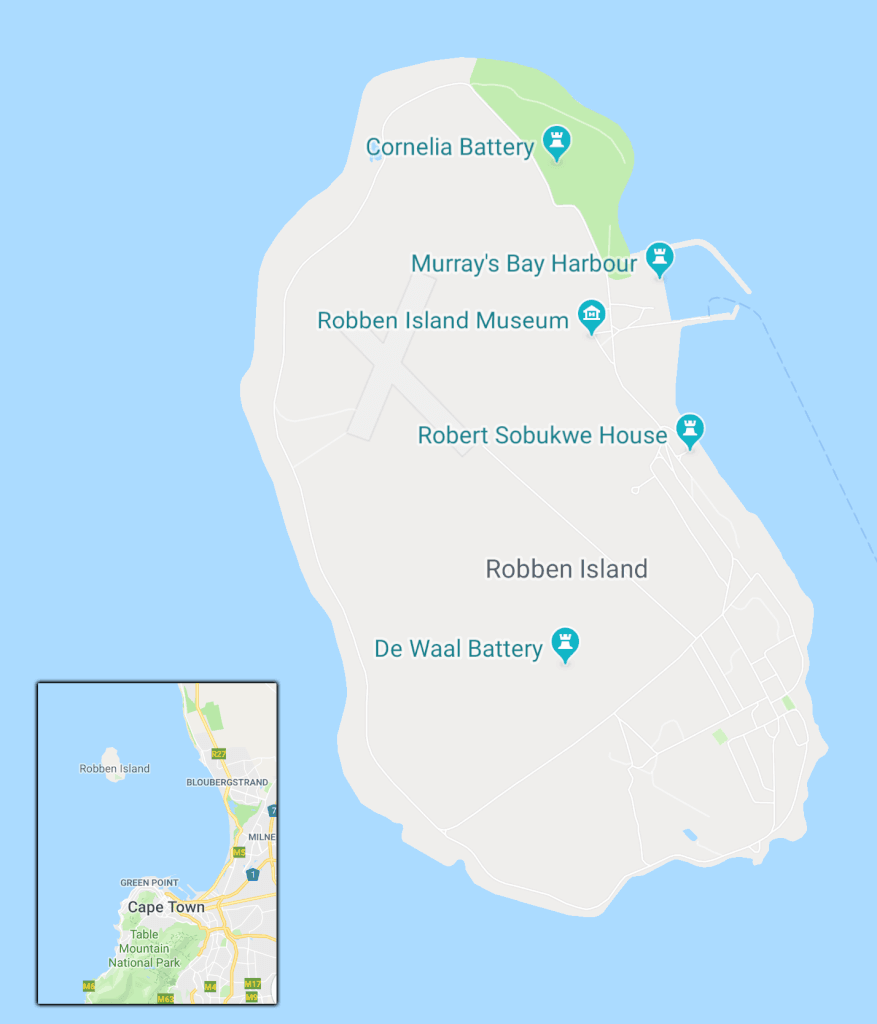
The climate is Mediterranean, not too much different from the nearby Cape Town. Although not rarely the island experiences stronger winds or extremes in temperature.
The name Robben Island comes from the original Dutch name, ‘Robbe Eiland’, which means “seal island”. The reason behind that name is mostly because at the time of European discovery in the fifteenth century, there were many seals, also penguins, tortoises, birds, and sea mammals. Whales are permanent visitors to the island’s shoreline, especially in the spring.
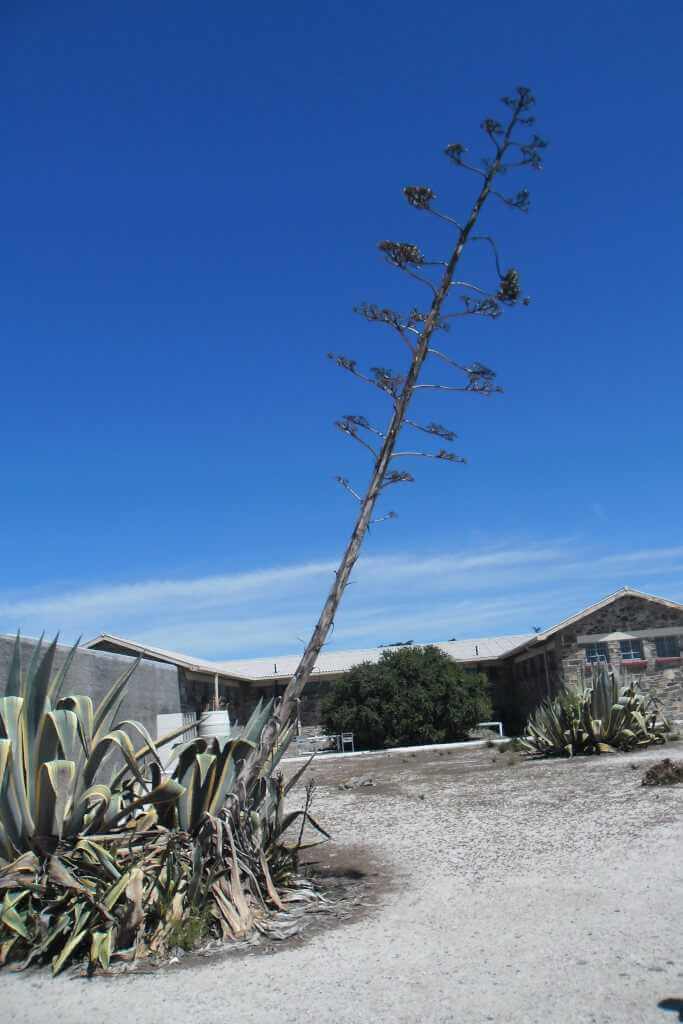
Days of Robben Island
- Thousands of years ago: at that time the sea level was lower than nowadays, stone age people could reach the island on foot !!
- 1488: Bartolomeu Dias discovered Robben Island when he anchored his ship in Table Bay.
- 15th & 16th Century: British and Dutch colonialists and traders used the island as an outpost and prison.
- 1652: Jan Van Riebeeck, of the Dutch East India Company used the island as a refreshment station for the company ships.
- 1658: Autshumato was the first political prisoner on the island, and he is one of the few prisoners who succeded to escape from the island.
- 17th Century: The island becomes a prison for the political leaders of anti-Dutch governing in the East Indies.
- 1795: The British colonize the southern part of Africa and used Robben Island as a penal colony for army deserters, murderers, thieves and native African leaders.
- 19th Century: Robben Island gradually evolved into a mix of hospital and prison. Mentally ill, lepers and diseased people lived beside prisoners.
- 1930s: the government sent back all lepers to hospitals on the mainland and burned all the buildings to prevent the spread of disease.
- World War II era: South Africa’s military used the island as a defensive line.
- 1961: South African government used Robben Island as a prison.
- 1991: with the end of apartheid, The maximum security prison for political prisoners was closed.
- 1996: The medium security prison for criminal prisoners was closed.
- 1997: the prison was turned into a museum, Named Robben Island Museum (RIM).
- 1999: UNESCO declared R.I.M. as a World Heritage Site.
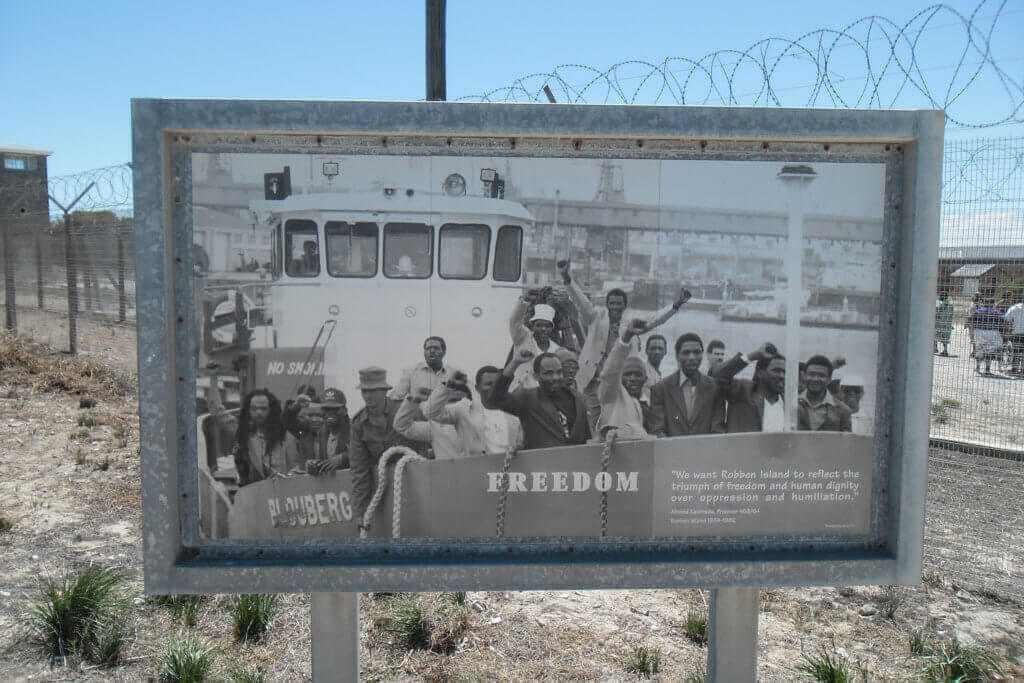
The adventure
I visited Robben island on Wednesday February 27, 2013. The visit to Robben island includes a ferry ride to the island from the Victoria & Alfred Waterfront and return. The visit takes 3 to 4 ours, including the ferries. the ferries depart at 09:00, 11:00, 13:00 and 15:00. The cost is 360 Rand (25$) for adults and 200 Rand (13.8$) for children under 18.
On the night before the trip to Robben island, l went to the bed early to get enough sleep before the big day. My hotel in cape town named Protea Breakwater Lodge, it is a nice hotel and very close to Victoria and Alfred waterfront, which coincidentally was a prison before. Now it is a university and hotel. In the morning, it was not a good start as l wake up late at 08:50 am, only ten minutes before the ferry departs Nelson Mandela gate at Victoria and Alfred waterfront. So l had to rush to Nelson Mandela gate, to reach it at exact 9 o’clock. Luckily l found out that the trip is delayed, because of weather condition. All the visitors were annoyed because of the delay and cloudy rainy weather, except me, as it was a good chance for me to take my morning tea with light breakfast.
After 40 minutes, the weather condition improved and the sun rose. The visitors started to embark the ferry. The ferry voyage takes from 20 to 45 minutes, depend on the weather and the ferry condition. Because of the delay, there was two ferries at a time. However, there was a long queue that took 30 minutes to embark the ferry.
At the ferry it was little scary at the beginning, as it was cloudy and the sun is not totally rising. The ferry looks like a sea bus, with multiple rows of seats, 4 seats on each side. The windows on each side show only the ocean and the waves. It took around 40 minutes to reach Murray’s Bay Harbor of Robben island.
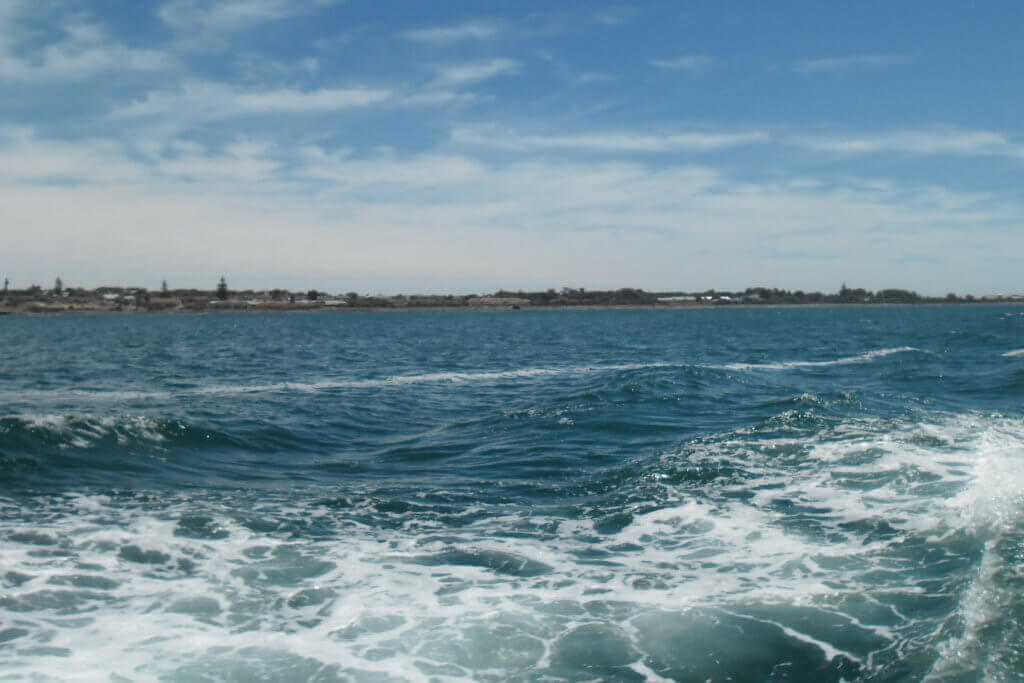
The ferry disembark us at Murray’s Bay Harbor on the east coast of the island. After a short walk, the buses were waiting for us, that buses will transport us to all the historical sites around the island. On the way to the buses, we passed by a high wall built by prisoners during the 1960s. There were many banners and photographs on the walls that documenting the prison brutality in the 1960s. Also there were many buildings where family and lawyer visits prisoners.
In the bus, we met our tour guide. He explained to us the history of the island and the political background during the apartheid era. On our tour route we passed by the graveyard of people who died from leprosy.
Then we passed by the Limestone Quarry. It dates back to the 17th century, where the police enforced prisoners to hard labor in very tough conditions of high temperature and lack of water. The quarry supplied stones for the Castle of Good Hope in Cape Town. Nelson Mandela was one of the prisoners who worked in the quarry for 13 years. There was no need for the limestone, prisoners would break up the stone and carry it to one end of the quarry one day and then back on the next day. Mandela suffered from eye problems because of working in the quarry. Mandela and his fellow prisoners used the time in the quarry to educate themselves in literature, philosophy, history and current events. The quarry was like a university for the prisoners.

Later on, the bus drooped us at the maximum security prison, where we met a new tour guide. He guided us through the different buildings and wards. Our guide was ex prisoner. He told us about his story, how the political police caught him and his trials. Then he showed us his ward and how hard the life was in the prison. The stories are really interesting and sad too.
Later, we came to the most interesting part, Nelson Mandela cell. We entered a ward full of small cells on both side. The cells are small, only 2 or 3 meters width. Surprisingly, the exact cell of Nelson Mandela is not known. I really don’t know how, as he was imprisoned for 18 years. May be it is because he was moving from a cell to another. The whole tour in the prison takes about 90 minutes includes short break, while the bus tour is about 40 minutes.
At the end we return back to the Murray’s Bay Harbor, then we take the ferry back to Cape Town. The return ferry was better than the first one. The sun-dick was wider, the views of Cape town and the table mountain are exotic.
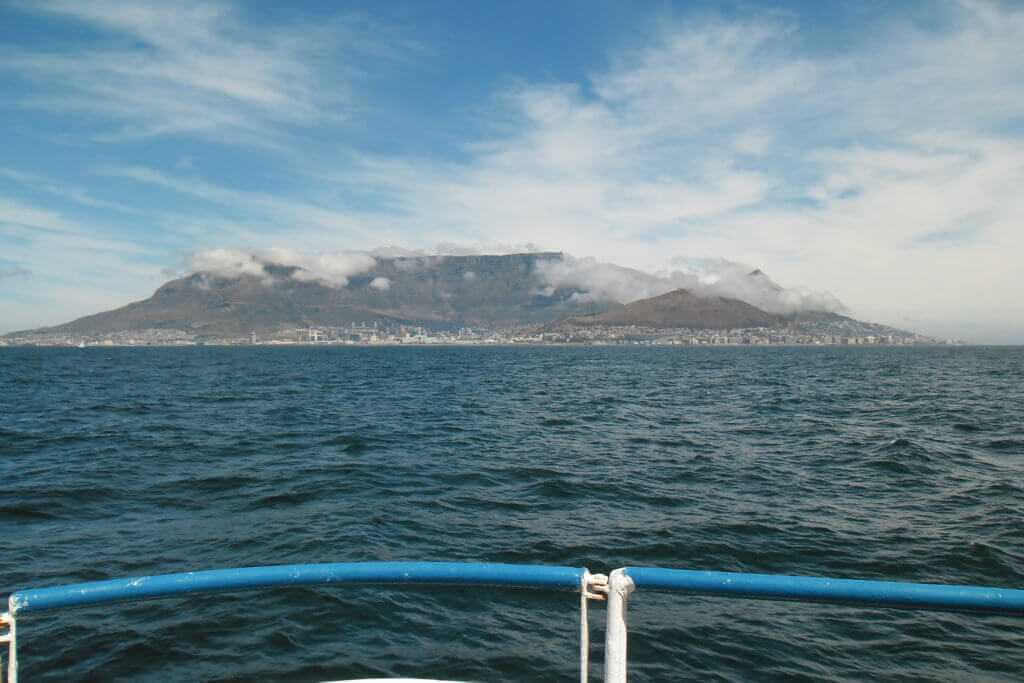
Last, The stories from Robben island are really inspiring. In my opinion the great lesson from Robben Island prison comes from understanding the power of reconciliation and to understand that the hate and anger generate hate an anger. Black and white people now lives equally and peacefully in South Africa. If they could do it in South Africa then we can do it everywhere in the world to bring global peace to be reality not only a dream.
“Today when I look at Robben Island, I see it as a celebration of the struggle and a symbol of the finest qualities of the human spirit, rather than as a monument to the brutal tyranny and oppression of apartheid. It is true that Robben Island was once a place of darkness, but out of that darkness has come a wonderful brightness, a light so powerful that it could not be hidden behind prison walls“
Nelson Mandela

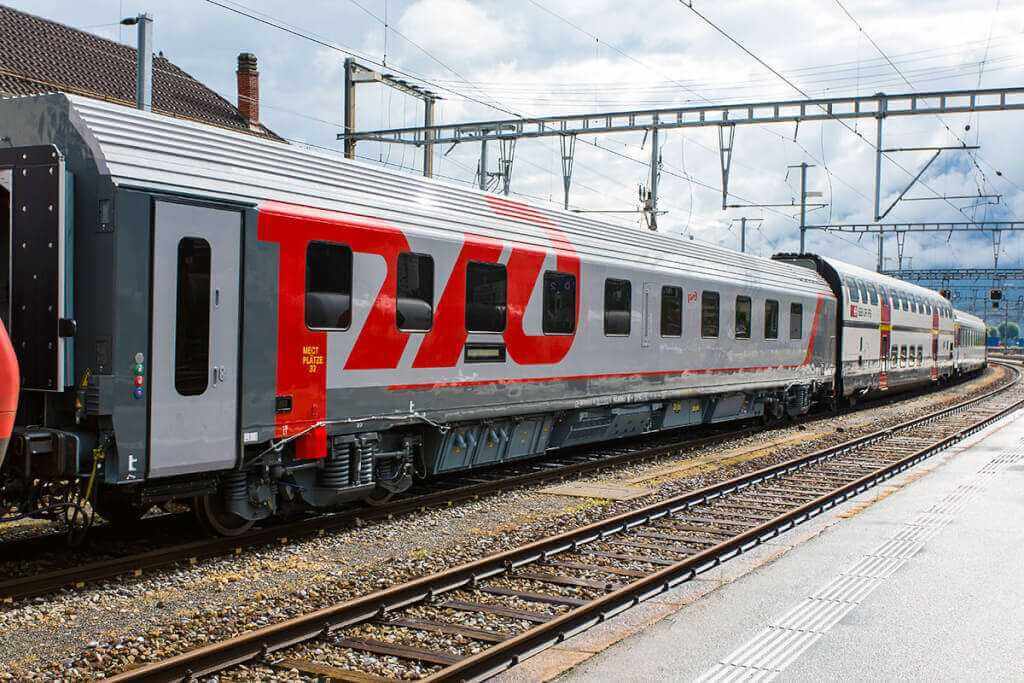

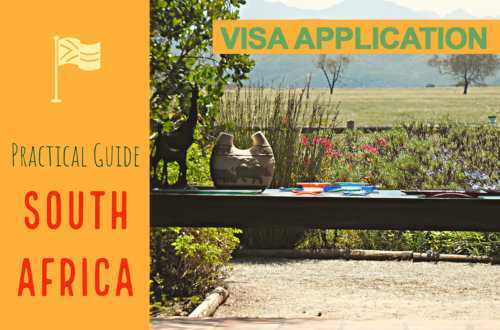


25 Comments
Traveler78
Thanks you are welcome
Traveler78
I have to confess, yes racism still persist. I hope it will change one day in the future
Traveler78
You are welcome and I am sure you will enjoy Cape Town and Robben Island
A Nation of Moms
What an interesting place to explore. I am not familiar with this island. It sounds like a place with a lot of history.
Traveler78
Yes it Robben Island is really interesting and if you will visit Cape Town you should never miss it
Lyosha Varezhkina (@lyoshathegirl)
Learning new things about history is always exciting. Thank you for sharing it and educating me!
Traveler78
Thank you welcome my friend
With Love Moni
Very well written. I have always wanted to visit this place but did not get a chance
Traveler78
Thank you. I wish you can visit it soon
Tiffany
Wow, you really learned a lot and I appreciate the interesting history lesson. I still can’t honestly wrap my head around how anyone ever decided that someone’s skin being a different color meant that they were inferior. Just rationally, it makes absolutely no sense and is so frustrating and baffling. This is really inspiring, thank you.
Traveler78
You are welcome and I agree with you. the most important now is to learn from the lessons for better future for all of us
Papa Jack
I can feel the greatness of this post. There are a lot of emotions in each visit and it made me aware of the greatness of Nelson Mandela.
Traveler78
Yes I still remember my trip to Robben Island as if it was yesterday and Nelson Mandela is a great African leader
Karen Monica
Such an informative post. I never heard of Robben Island before. So I learned something new today. But I do agree with you, everyone should be treated equally.
Traveler78
Thanks and yes all of us seek love and peace
Laura G
Cape Town is such a beautiful town! Great article!!
Traveler78
Thank you so much and yes Cape Town is one of a kind
Traveler78
Yes it was very informative trip everyone was attentive
playinspiredmum
What an informative post. I hadn’t heard of Robben Island before nor its history which is still quite young in the grand scheme of things. Thank you so much for sharing! I really enjoyed reading this piece.
Traveler78
Welcome my friend I am glad you enjoy it
Ari Jade
Great post I love that you experienced so many aspects of the culture. I also found in fascinating that many of their leaders were held at Robbins!
Traveler78
Yes the story is very impressive……I believe it is more than an island
Traveler78
it worth visit. I am sure you will enjoy it
TeacherNista
This is very inspiring! Very true, we must not abuse other instead we should treat each other equally and with respect regardless of race, culture and social status.
Traveler78
True and this is the aim of this article to convey the message from Robben island